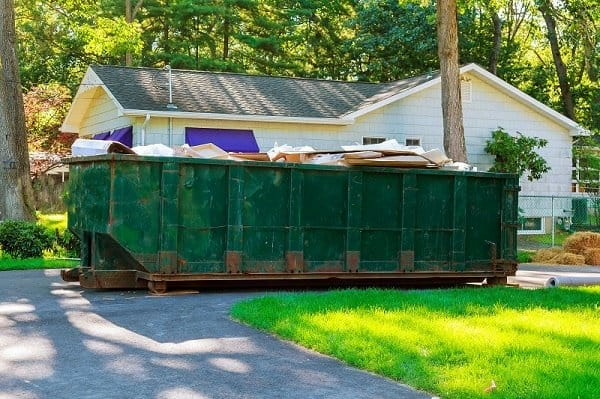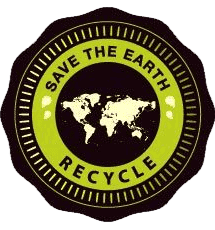Finding dumpsters for rent isn’t all that difficult, but understanding the way that dumpster size can be calculated might get confusing at first. As disposal containers, they aren’t always measured by their physical size, but by the capacity that they can accommodate safely. How does this work, and how do you decide which one suits you best?
Understanding Dumpster Measurements
There are two types of measurements that you might see when looking at rental dumpster options online. The first is the physical measurements of the dumpster’s body, and the second is the measurement of what it can contain, counted in cubic yards.
Dumpster sizes are generally calculated through the number of cubic yards they can hold. A 20-yard dumpster holds 20 cubic yards of debris, while a 30-yard dumpster obviously holds ten more cubic yards than that. A 40-yard dumpster holds twice as many cubic yards of debris and trash as 20-yard dumpsters, and so on. Two dumpsters that can hold 10 cubic yards will always be able to hold 10 cubic yards, but they might have physically different heights, widths, lengths, and weights.
Why Cubic Yards?
Let us say a dumpster for rent can hold 20 cubic yards of debris. If you managed to give up 10 cubic yards of perfectly soft debris, such as dry dirt, then it would fill half of a 20-yard dumpster. However, when you are putting furniture or another non-soft material into the container, then it won’t perfectly fill that 20-yard dumpster halfway point. So why use it?
The explanation is simple: when you buy a dumpster, the physical shape and scale matters, but the container’s capacity is even more important. If you need a 40-yard dumpster but end up with a 20-yard dumpster instead, you have the wrong dumpster size, so it will fill up and leave you with other debris that doesn’t have anywhere to go. Dumpster rental is based on using the right dumpster for the right dumpster job, especially when it comes to container size.
What about regular measurements?
Normal measurements are instead used for the outer size of the dumpster container. For example, you might need the roll-off dumpster sizes to make sure that the truck loads and unloads it properly, since the roll-off dumpster could end up in an alleyway that it isn’t able to actually fit inside. These measurements are more used for positioning the dumpster and making sure that it gets delivered to a fitting location.
Keep in mind that dumpster sizes aren’t always an indicator of a larger or smaller container size. A dumpster might be a foot wider or taller but still offer the same internal dumpster size, with the extra width or height coming from extra pieces or a larger outer surface.

What is a standard dumpster size?
The typical commercial dumpster rental size of each cubic yard size changes based on the kind of dumpster you are getting, but the majority can still be summarised with averages. For example:
- 10-yard dumpster: 14 feet long, 3.5 feet high, 7.5 feet wide. Often used for small-scale projects.
- 15-yard dumpster: 16 feet long, 3.5 feet high, 7.5 feet wide. Slightly larger than a 10-yard dumpster, but not by much.
- 20-yard dumpster: 22 feet long, 4.5 feet high, 7.5 feet wide. Mainly used for standard renovation and removal work, and seen as the ‘baseline option’ in most cases.
- 30-yard dumpster: 22 feet long, 6 feet high, 7.5 feet wide. Extremely large and mostly meant for bigger construction projects, as well as landscaping.
- 40-yard dumpster: 22 feet long, 8 feet high, 7.5 feet wide. The largest of the ‘standard’ sizes that most companies offer, and meant for big projects.
Are they always the same?
Of course, these sizes can deviate heavily. You might find a 10-yard dumpster that manages to be taller but slimmer or a 40-yard dumpster that is much flatter and wider than a 30-yard dumpster with a smaller capacity. Roll-off dumpster sizes can be larger, too, since roll-off dumpster designs sometimes need to be raised to accommodate the wheels on the bottom.
Truck Loads
Another common method of judging dumpster sizes is through truck loads. For example, a 10-yard dumpster can hold the same as three standard pickup truck loads, whereas a 15-yard dumpster rental can hold four and a half truck loads. 20 cubic yards is equivalent to about six full trucks of debris, although in practical terms you might not be able to fit that exact amount in.
Which do I choose?
Finding dumpsters to rent for a specific purpose means choosing a size, which can be daunting at first. Each size is ideal for a different general-purpose, and choosing the right one is key to getting the best experience possible out of your dumpster rental.
For example, you might choose dumpster sizes like a 30-yard dumpster rental for demolition projects that create a lot of bulky debris, since the container can hold all of it well. On the other hand, if you are just breaking down a single wall between two rooms, a 10-yard dumpster might be able to hold all of it without issue. The sizes of the dumpster you choose, i.e. 10-yard, should reflect the size of the debris you will create or the amount of trash that needs to be disposed of.
Size vs. Price
Usually, going for the smallest size that fills your needs will cut down on having to pay more for the extra capacity that you don’t use. On the other hand, extra capacity can sometimes be useful if you create more debris than you expected. A 15-yard dumpster can end up being more helpful than smaller dumpster sizes while also being less of a waste than large ones, just to name one particular scenario.
Whatever size you pick, remember that price will often scale upwards. Moving one step up the cubic capacity ladder will increase the cost of the dumpster in nearly every case. Because of this, you can save a lot of money by reducing the overall size of the dumpster you choose, although you run the risk of ending up with something too small to properly hold all of the debris you are cleaning up. What you choose to do about this is entirely up to you and depends on the project you are trying to complete.
Other Factors
Size isn’t the only important part of dumpster rental. Sometimes, you will have to follow weight limits or keep the height of the debris below an overall threshold. If you put a wardrobe in the dumpster that peeks over the top, the dumpster rental company might require you to tip it over or break it down before it can be considered ready to pick up. In a similar vein, waste disposal weight limits might stop you from filling a dumpster with solid construction debris if it is too heavy since this can become impossible for them to deal with.
Different companies have their own limitations and restrictions, and it is often better to just accept them than try to work around them. If some cleanup projects are that difficult that they create enough debris for two dumpster rentals, it is better to just take a second dumpster instead of trying to force it all into one. This not only increases the potential fees involved but can actively get in the way of your cleaning up.






